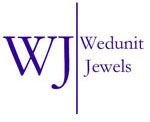No products
What is your Jewellery Worth?
No easy answer to this question. What anything is "worth" is always based on the circumstances.
Scrap Metal Value
For items likely to be recycled, such as low quality, less desirable items, or broken jewellery, their value may be only as scrap metal. In today's market, many buyers will not pay anything for small diamonds unless they are very high quality, concentrating only on the value of the gold. Larger diamonds of quality may bring 50% of wholesale at best- shapes other than round are not as easy to resell, so buyers may only offer 25% of wholesale.
The scrap market normally pays 40 - 80% of gold value, depending on quality and quantity. For example, a 14k ring weighing 10 grams may bring 40-50% of the daily spot value for its actual gold content.
Liquidation Value
The liquidation value reflects not only the quality and weight of metal and gems, but also how you go about selling the item- the assumption is that you need money right away so you have to find a buyer with ready cash such as a pawn broker or jeweller who buys used jewellery.
Jewellers or pawnbrokers who buy estate jewellery for resale pay somewhat more- about 10 - 20% of current retail. If your item is something they can easily resell, they may pay as much as 25% of the original retail. These buyers will pay premiums only for highly desirable items, such as well known brands, high quality items, or items with an immediate market.
Retail Replacement Value, RRV for Insurance Purposes
If a person is valuing an item in order to insure it, we call that the retail replacement value. This price reflects the costs to buy a near identical item on today's market. This will be the highest value as it includes all the costs to produce and market the item (such as labour, overhead, advertising etc.). This value is NOT reflecting the price you could expect selling your item as a second hand item.
Fair Market Value
Fair market value is an estimate of the current price to the ultimate consumer for an item of like kind, quality, and condition from an establishment commonly selling similar merchandise (the most common market). Estate or period jewellery cannot be replaced with a new item, so we assume that the replacement would be a similar used item. With period and other estate jewellery that is resaleable as is, the most common market is generally a firm that sells estate jewellery to the public.
Usually, the fair market value of re-saleable estate jewellery reflects the current wholesale value of the gold and gems only. All the costs to originally produce and market the item, such as labour, overhead, advertising, etc. have already been paid for when the item sold the first time. What remains is the intrinsic value of the materials and the desirability of the item.
Because an item is old or from of a particular period doesn't necessarily mean it is especially valuable. What matters is marketability and desirability, generally a function of beauty and workmanship. Ugly or poorly made pieces can be very difficult to sell as is, so they may be valued only as scrap.
